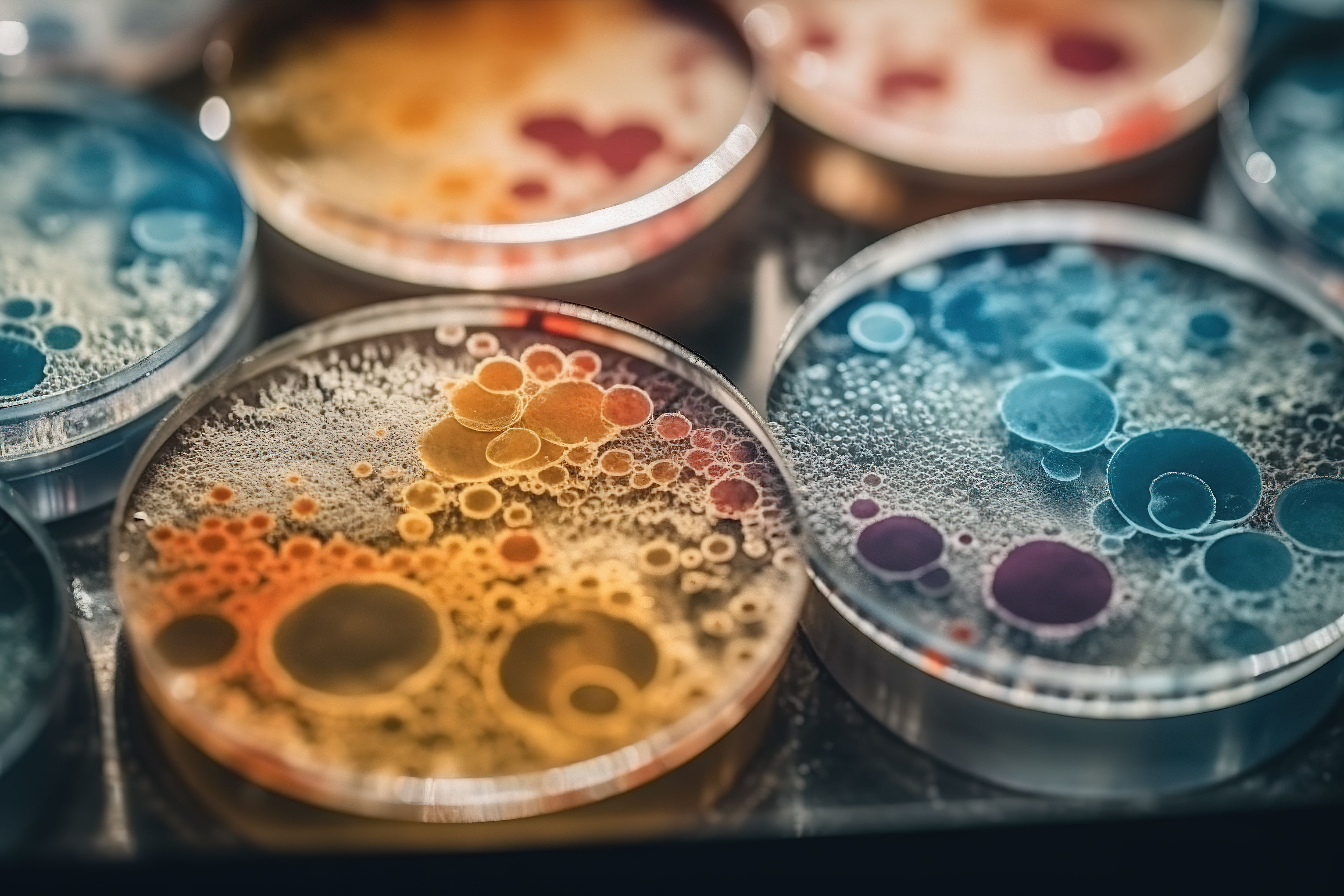LC–MS/MS with Postcolumn Ammonia Infusion Determines Ultratrace Enantiomers of Closantel in Bacteria
Although closantel (CLO) is well-regarded as a curative antiparasitic drug, even low doses have been found to cause serious side effects in the human retina and central nervous system.
Researchers at South China Agricultural University in Guangzhou, China have been in search of an effective method to separate and determine enantiomers of the antiparasitic drug closantel (CLO) and its enantiomers in bacterial cells, as CLO has also been shown in recent studies to have potential for antibacterial applications (1). The research team developed an enhanced method of liquid chromatography coupled to tandem mass spectrometry (LC–MS/MS) for chiral separation, adding a postcolumn infusion of ammonia.
Macro close up shot of bacteria and virus cells in a scientific laboratory petri dish. Generative AI | Image Credit: © zaschnaus - stock.adobe.com

Published in the Journal of Chromatography A, the research addresses drug chirality as it relates to enantiomers, which are mirror-image pairs of compounds that cannot be superimposed onto one another. In a chiral drug, the researchers said (using thalidomide as an example), two enantiomers may have the same exact physicochemical properties, but they differ or could even be complete opposites in terms of metabolism and toxicity (1). While closantel (CLO) is known to have a curative effect when it comes to parasites, studies show it can cause nervous system or retinal damage in humans at low doses.
However, CLO doses as low as 0.5 μg/mL can also be significantly synergistic in their antibacterial effects when combined with colistin (CST) in treatment of bacterial cells. Since that concentration is extremely low, the researchers sought an ultrahigh-sensitivity method for detection of ultratrace enantiomers (1). An LC–MS/MS approach was devised that used a chiral column for separation of enantiomers and tested several chiral stationary phases (CSPs) for compatibility with MS, mobile phase and other modifiers, and varying column temperatures. A postcolumn T-piece, as the study illustrated, integrated an ammonia solution into the LC–MS/MS system at different concentrations and flow rates to obtain the optimum conditions for each. The addition of ammonia reversed the mobile phase pH, allowing optimal chromatographic separation of R-closantel and S-closantel with regard to alkaline.
The researchers said to their knowledge, there had been no prior reports of LC–MS/MS determining CLO enantiomers, although they cited two previous studies that attempted normal-phase high performance liquid chromatography (NP-HPLC) analysis. That approach fell short, they said, because of the NP mode’s incompatibility with MS in analyzing the bacterial cells (1).
This modified method was linear over a concentration range of 0.5 to 50 pg/mL (where R2 ≥ 0.99) for both R- and S-closantel, according to the results of the study (1). The detection limit was 0.15 pg/mL for all target analytes in the bacterial cells, and average recoveries of the two enantiomers were between 81.2% and 107.8% with relative standard deviations below 15%. These figures were adequate enough for the researchers to pronounce their experiment a success, and to suggest it as a reference point for future investigation into the biological behaviors of CLO enantiomers and their relationship to CST.
Reference
(1) Ding, T.; Liu, L.; Liu, Y.; et al. Chiral separation of racemic closantel and ultratrace detection of its enantiomers in bacteria by enhanced liquid chromatography–tandem mass spectrometry combined with postcolumn infusion of ammonia. J. Chromatogr. A 2023, 1698, 464001. DOI: 10.1016/j.chroma.2023.464001
Advances in Non-Targeted Analysis for PFAS in Environmental Matrices
March 27th 2025David Megson from Manchester Metropolitan University in Manchester, UK, spoke to LCGC International about the latest developments in non-targeted analysis (NTA) of per- and polyfluoroalkyl substances (PFAS) in environmental matrices based on a recent systematic review paper he has collaboratively published (1).
Study Explores Thin-Film Extraction of Biogenic Amines via HPLC-MS/MS
March 27th 2025Scientists from Tabriz University and the University of Tabriz explored cellulose acetate-UiO-66-COOH as an affordable coating sorbent for thin film extraction of biogenic amines from cheese and alcohol-free beverages using HPLC-MS/MS.
Quantifying Microplastics in Meconium Samples Using Pyrolysis–GC-MS
March 26th 2025Using pyrolysis-gas chromatography and mass spectrometry, scientists from Fudan University and the Putuo District Center for Disease Control and Prevention detected and quantified microplastics in newborn stool samples.
Multi-Step Preparative LC–MS Workflow for Peptide Purification
March 21st 2025This article introduces a multi-step preparative purification workflow for synthetic peptides using liquid chromatography–mass spectrometry (LC–MS). The process involves optimizing separation conditions, scaling-up, fractionating, and confirming purity and recovery, using a single LC–MS system. High purity and recovery rates for synthetic peptides such as parathormone (PTH) are achieved. The method allows efficient purification and accurate confirmation of peptide synthesis and is suitable for handling complex preparative purification tasks.







